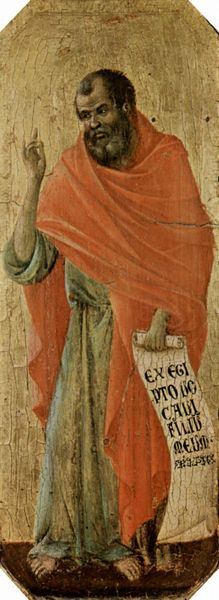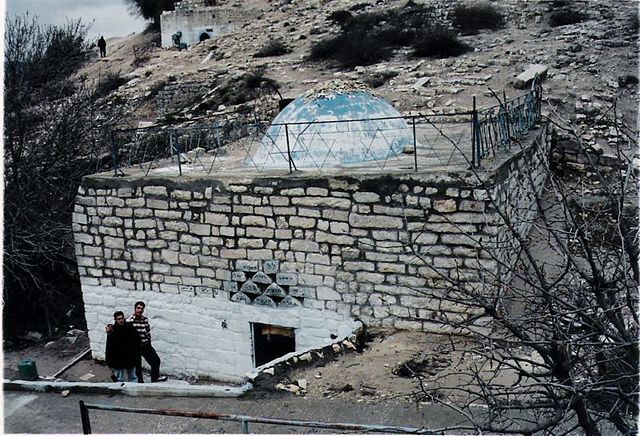In the Hebrew Bible, Hosea, also known as Osee, son of Beeri, was an 8th-century BCE prophet in Israel and the nominal primary author of the Book of Hosea. He is the first of the Twelve Minor Prophets, whose collective writings were aggregated and organized into a single book in the Jewish Tanakh by the Second Temple period but which are distinguished as individual books in Christianity. Hosea is often seen as a "prophet of doom", but underneath his message of destruction is a promise of restoration. The Talmud claims that he was the greatest prophet of his generation. The period of Hosea's ministry extended to some sixty years, and he was the only prophet of Israel of his time who left any written prophecy. Though its date is contested among scholars, the majority agree that the bulk of the book was probably composed around the times of Jeroboam II of Israel.
An 18th-century Russian icon of the prophet Hosea (Iconostasis of Transfiguration Church, Kizhi monastery, Karelia, Russia)
Illustration of Hosea and Gomer from the Bible Historiale, 1372
The Prophet Hosea, by Duccio di Buoninsegna, in the Siena Cathedral (c. 1309–1311)
The structure at the cemetery in Safed known as the Tomb of Hosea
The Book of Hosea is collected as one of the twelve minor prophets of the Nevi'im ("Prophets") in the Tanakh, and as a book in its own right in the Christian Old Testament. According to the traditional order of most Hebrew Bibles, it is the first of the Twelve.
The Prophet Hosea, by Duccio di Buoninsegna, in the Siena Cathedral (c. 1309–1311)
Illustration of Hosea and Gomer from the Bible Historiale, 1372.




